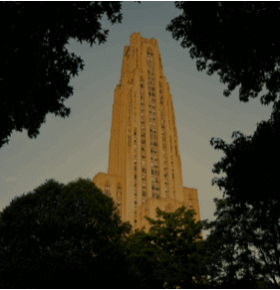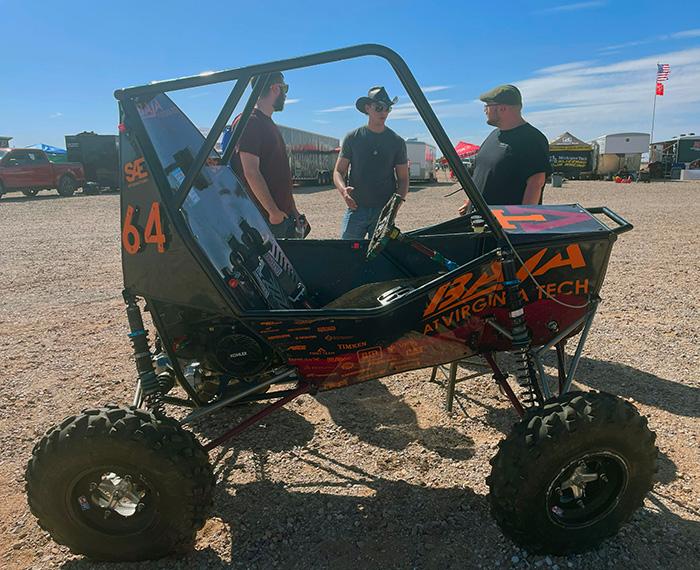
Subscribe to Pittwire Today
Get the most interesting and important stories from the University of Pittsburgh.Pitt-Bradford’s Baja Racing Club traveled to a Society of Auto Engineers event

In May, members of the University of Pittsburgh at Bradford’s Baja Racing Club traveled to Marana, Arizona, to experience one of the Society of Auto Engineers’ annual offroad racing competitions for college students.
Ovidiu Frantescu, club advisor and associate professor of environmental science, and members Hayden Goldsmith and Austin Stout Peters drove the 32-hour trip to the multiday event. Ever since the George B. Duke Engineering and Information Technologies Building opened in 2023, members of the club have been dreaming of designing and building their own dune buggy for the Baja competition. The Duke Building has a project lab next to the machine shop that was created with this kind of project in mind.
Club members have been tinkering with designs for the dune buggy-like vehicles, but there’s a lot to figure out — especially when it comes to meeting the strict performance and safety standards set by the engineering society.
Frantescu, who has degrees in automotive mechanics and petroleum engineering, identifies as both a gear head and a geologist. He couldn’t resist the thought of a field trip to the race in the Sonoran Desert for inspiration and information.
“The students were super pumped about it,” he said. He told them they had one job – to talk with the student teams and learn as much as possible about the cars.
During the first two days of the competition, the cars are inspected for safety. Drivers must prove they can get out of the vehicle in less than 5 seconds, and the cars must be able to stop in less than 10 feet. Then come tests such as a sled pull and acceleration, where teams are awarded points for their cars’ performances. The final day is a four-hour endurance race.
Goldsmith and Stout Peters spent the first two days in the paddocks talking with student teams as cars underwent the tests.
“It was a very relaxed environment,” said Goldsmith, a junior from Kane, Pennsylvania. “We got to talk a lot about the cars. Nobody was trying to keep a trade secret. They explained everything to you.
“They really stressed just building a car,” the club’s secretary added. “You won’t know what to change until you get it on the track.” Goldsmith said he plans to push for building a car, something he hopes will also boost club membership. Although the club has a dozen active members, it will need two or three times as many students to take a team to competition.
The club is open to students from all majors. Goldsmith and Stout Peters are both environmental science majors who grew up working on cars.
Beyond what they learned at the event, it was the first time either Goldsmith or Stout Peters had been so far west. The morning before the endurance race, all three travelers learned about the desert environment at nearby Saguaro National Park, where the namesake cactuses grow up to 40 feet tall.
“I’d never been to Arizona,” said Stout Peters, who is from Allegany, New York. “There were way more mountains and canyons than where I live, and I’d never seen a cactus in the wild before.”

